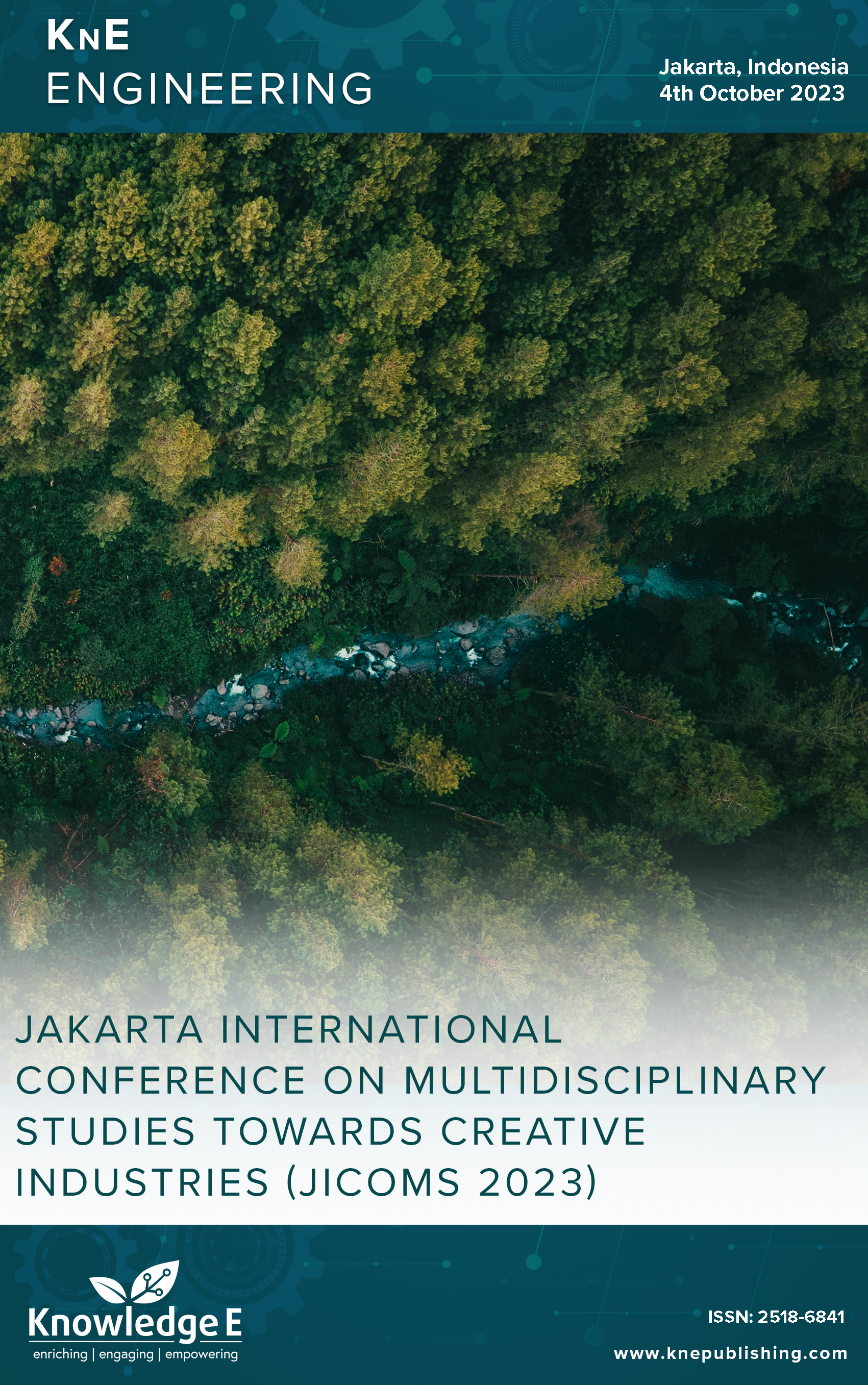Virtual Reality (VR) and Digital Storytelling (DS) Technology to Improve English Speaking Skills of Vocational Students
DOI:
https://doi.org/10.18502/keg.v6i1.15380Abstract
In an era characterized by globalization and digitalization, proficiency in English is a vital skill, particularly for vocational students specializing in multimedia fields. This research provides a concise overview of a study that investigates the use of virtual reality (VR) and digital storytelling (DS) technology as innovative tools to enhance the English-speaking skills of vocational multimedia students. This study aims to assess the efficacy of VR and DS technology in improving the English-speaking abilities of vocational multimedia students, exploring their potential to provide immersive language learning experiences and foster creativity and engagement. The integration of VR and DS technology into English language instruction can play a pivotal role in improving the speaking skills of vocational multimedia students. These technologies offer immersive experiences and creative opportunities that not only enhance language skills but also prepare students for success in a digitally driven, globally connected workforce.
Keywords: virtual reality, business model, entrepreneurial mindset
References
[2] Stephen OO. Information Technology, Technical Vocational Education in Developing Workforce towards Globalization. The Roles of Technology and Globalization in Educational Transformation. IGI Global; 2020. pp. 80–97.
[3] Yang FC, Lo FY, Hsieh JC, Wu WC. Facilitating Communicative Ability of EFL Learners via High-Immersion Virtual Reality. J Educ Technol Soc. 2020;23(1):30–49.
[4] V. Shunkov, O. Shevtsova, V. Koval, T. Grygorenko, L. Yefymenko, Y. Smolianko, and O. Kuchai, “Prospective Directions of Using Multimedia Technologies in the Training of Future Specialists,” 2022.
[5] Thuan BB. Digital Literacy of Vietnamese Human Resources. The VMOST Journal of Social Sciences and Humanities. 2023;65(2):71–84.
[6] Qian Y, Wang J, Cai Y. Revolutionizing Educational Landscapes: A Systematic Review of Metaverse Applications, Paradigms, and Emerging Technologies. Cogent Education. 2023;10(2):2264006.
[7] Deng Z, Chen Z. Balancing Creative Expression and Societal Well-being: A Comprehensive Regulatory Framework for the Chinese Video Game Industry. J Knowl Econ. 2023;:1–28.
[8] Kaplan-Rakowski R, Gruber A. “One-on-One Foreign Language Speaking Practice in High-Immersion Virtual Reality,” in Contextual Language Learning: Real Language Learning on the Continuum from Virtuality to Reality, Springer Singapore, 2021, pp. 187-202. https://doi.org/10.1007/978-981-16-3416-1_9.
[9] E. Torchinava, “The Impact of Social Media on the Four Components of English Language Development for Learners: A Case Study,” Online Journal of Humanities (OJH), no. 8, 2023.
[10] Kim D, Li M. Digital Storytelling: Facilitating Learning and Identity Development. Journal of Computers in Education. 2021;8(1):33–61.
[11] Eisazadeh N, Rajendram S. Supporting Young Learners through a Multimodal Digital Storytelling Activity. Journal of Early Childhood Education Research. 2020;9(1):76– 98.
[12] Zhussupova R, Shadiev R. Digital Storytelling to Facilitate Academic Public Speaking Skills: Case Study in Culturally Diverse Multilingual Classroom. Journal of Computers in Education. 2023;10(3):499–526.
[13] Hajizadeh S, Ebadi S, Salman AR, Bt Adi Badiozaman IF. An Exploration into Young Twins’ Journey Toward Multi-Literacy Development via Digital Multimodal Composing. Technology Assisted Language Education. 2023;1(1):8–27.
[14] Wen W. “Exploring Teaching and Learning in an Undergraduate Online Digital Literacies Course: Instructor’s Scaffolding, Students’ Performance and Perspectives,” Ph.D. dissertation, The University of Arizona, 2023.
[15] Anderson RC, Haney M. Reflection in the Creative Process of Early Adolescents: The Mediating Roles of Creative Metacognition, Self-Efficacy, and Self-Concept. Psychol Aesthet Creat Arts. 2021;15(4):612–26.
[16] Hirsch S, Macleroy V. The Art of Belonging: Exploring the Effects on the English Classroom When Poetry Meets Multilingual Digital Storytelling. Engl Educ. 2020;54(1):41–57.
[17] Sileyew KJ. Research Design and Methodology. Cyberspace; 2019. pp. 1–12.
[18] Zhou S, Hiver P, Al-Hoorie AH. Measuring L2 Engagement: A Review of Issues and Applications. Student Engagement in the Language Classroom; 2021. pp. 75–98.
[19] Hiver P, Al-Hoorie AH, Vitta JP, Wu J. Engagement in Language Learning: A Systematic Review of 20 Years of Research Methods and Definitions. Lang Teach Res. 2021;:13621688211001289.
[20] Nassaji H. Good Qualitative Research. Lang Teach Res. 2020;24(4):427–31.
[21] Brutt-Griffler J, Jang E. Dual Language Programs: An Exploration of Bilingual Students’ Academic Achievement, Language Proficiencies and Engagement Using a Mixed Methods Approach. Int J Biling Educ Biling. 2019.


